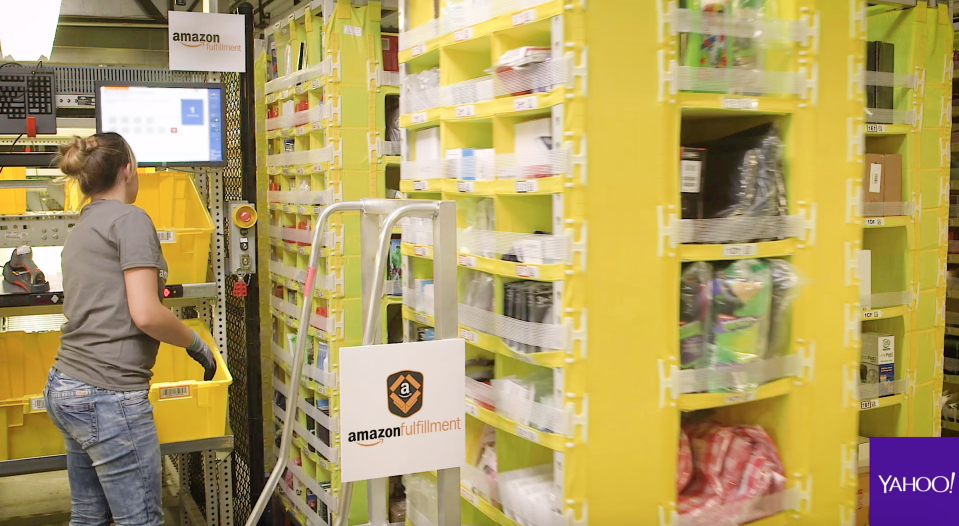How Amazon quickly trains 120,000 workers for the holidays
Amazon (AMZN) announced in October it plans on hiring 120,000 seasonal workers over the next month to meet consumer demand for the holidays.
While that number is similar to Amazon’s seasonal hiring binge last year, it also means Amazon is virtually doubling the number of people it employs during what it calls “peak season” across its 75-plus fulfillment centers and 25 sorting centers in the U.S.
But how does Amazon manage to ramp up so many temp workers so quickly?
Alex Ries is an operations manager at Amazon’s Tracy, California-based fulfillment center, a sprawling 1.2 million square foot facility roughly 60 miles away from San Francisco that employs more than 3,500 employees. A former United States Marine Forces Reserve sergeant of six years, Ries joined Amazon in June 2015.
He now manages the inbound team responsible for processing and categorizing the millions of items that come into the warehouse from different merchants each year.

“The majority of work to get those people ready is done ahead of time,” Ries explained to Yahoo Finance. “From January onward, my team is thinking about how we can better prepare for peak [season], and a lot of that comes from making sure we have the right equipment, making sure our equipment works and making sure those processes are ready to go by the time we start getting our new hires.”
Nina Lindsey, an Amazon spokesperson, credits Amazon’s quick ramp-up for the holidays to the wide range of technology it deploys to drive down the training time from six weeks at many traditional warehouse jobs to just two days.
“A lot of it is state-of-the-art and even technology that we’ve developed in-house on our own with the feedback of our employees,” Lindsey told Yahoo Finance.
At the Tracy, California, fulfillment center’s “pick stations,” for instance, hundreds of robots work in tandem to bring items to employees, who then pack those items in different bins to swiftly fill customer orders.

Those pick stations sport computer screens with easy-to-understand menus and graphics so workers can quickly find items for customer orders and place them in bins to be shipped off for packaging. Likewise, when those bins reach the packaging area, workers reference instructions on another set of computer screens that instruct them on how to quickly and efficiently box and tape orders.
For Amazon, offering a streamlined and efficient training process for its seasonal workers is paramount not just for meeting shopping demand during peak season but to also better compete against other retailers, who are also ramping up its seasonal workforces. Target (TGT) plans on adding 100,000 temporary holiday workers, for instance, while Macy’s has said it will add 80,000 seasonal workers of its own.
While the average tour of duty for an Amazon seasonal worker can range anywhere between six weeks and three months, Lindsey said Amazon expects to hire “thousands” of them on full-time, depending on a mix of factors, including work performance and their desire to stay on.
—
JP Mangalindan is a senior correspondent for Yahoo Finance covering the intersection of tech and business. Email story tips and musings to jpm@oath.com. Follow him on Twitter or Facebook.
More from JP:
Sallie Krawcheck on good leadership: ‘Don’t molest your employees’
Why the Russia ad scandal could actually be a win for Facebook
Lyft exec: Humans won’t lose their jobs because of self-driving vehicles
RBC analyst: Only 2 scenarios would spur investors to flee Facebook
LEAKED AUDIO: New Uber CEO Dara Khosrowshahi reveals 3 things employees should know about him


